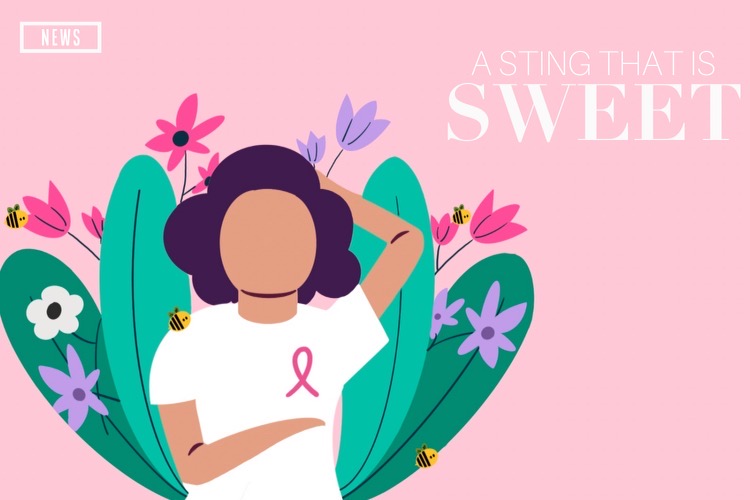A Sting That Is Sweet: Honeybee Venom Used to Treat Cancer
A new treatment for breast cancer comes from a surprising source – modified bee venom.
Sep 26, 2020
Bees have contributed a lot to the ecosystem and to humanity itself; honey, pollination, biodiversity and more. They do so much for the planet and recently, bees have added a new contribution to their list. Scientists from the Harry Perkins Institute of Medical Research in Australia have newly discovered that honeybee venom, which contains a molecule called melittin, can be used to kill aggressive breast cancer cells.
Breast cancer is the most common cancer in women all around the world. Despite major strides in treatments thanks to new medical technologies, an estimated 42,690 people died of breast cancer in the United States this year alone. With this new finding, it might be possible to treat two especially difficult types of breast cancer: triple-negative and HER2-enriched. At a certain level, too much melittin can be more damaging and toxic than intended, but with proper caution and at the right concentration, melittin can kill cancer cells within an hour. The best part about melittin is that it does little damage to healthy surrounding cells.
To find this out about melittin’s benefit, researchers extracted the potent molecule from about three hundred honeybees and bumblebees. They carefully removed the gland that contained the venom from honeybees and bumblebees from Ireland, England and Australia. When tested at that perfect concentration, the melittin showed the ability to kill cells in the two aforementioned cancers: triple-negative and HER2-enriched. Triple-negative is one aggressive type of cancer that accounts for less than one-fifth of all breast cancers. It is usually treated through the usual methods of extensive chemotherapy, radiotherapy and surgery. Now, melitten offers cancer patients a new method of treatment.
“I kind of have mixed feelings about that. It’s good that they found a way to kill cancer cells but it doesn’t seem right to use bees. Bees are already endangered and need their venom to defend themselves,” freshman Anngelie Gomez said.
One valid concern is how the bees were treated throughout this research, especially since the insects are endangered. The Harry Perkins Institute, however, commercially purchased their bees then anesthetized with carbon dioxide and chilled them. The venom was manually removed and then stored. Australian honeybees are also among the healthiest in the world. This does, however, raise the question: if this venom was used worldwide, would every treatment sustain the same level of care used during this experiment?
Melittin was tested on a few cancer cells, in a Petra dish, meaning that researchers still do not know for sure if it will work with large-scale cancers. It is expected that through clinical trials, they could possibly make this an accessible treatment for all.
“It’s really cool and could be helpful to many people,” freshman Myrea Ghetti said.
It is important to know that the scientists note that there is more research to be done and so much more to find, including how exactly melittin kills these cancer cells. Nevertheless, it is an important step forward in finding a better cure, and could result in hundreds of thousands of people around the world getting treated and potentially cured of breast cancer.













